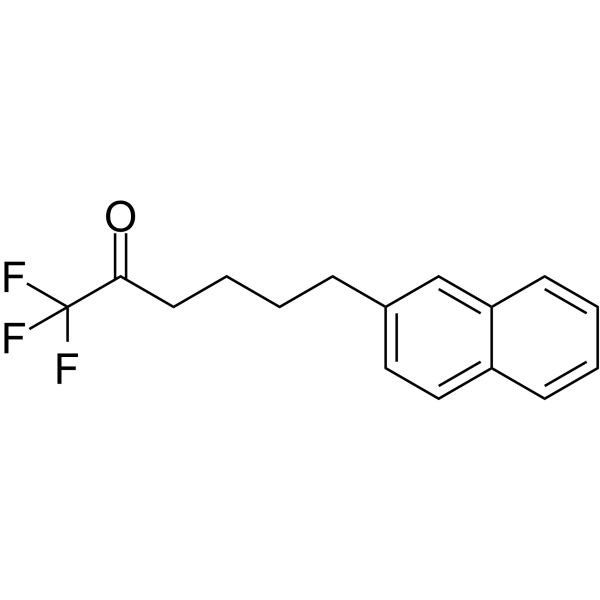1071001-09-6
| Name | 1,1,1-Trifluoro-6-(2-naphthyl)-2-hexanone |
|---|---|
| Synonyms |
2-Hexanone, 1,1,1-trifluoro-6-(2-naphthalenyl)-
1,1,1-Trifluoro-6-(2-naphthyl)-2-hexanone |
| Description | FKGK18 (FKGK18) is a potent, selective inhibitor of iPLA2 (group VIA Ca2+-independent phospholipase A2) with IC50 of 50 nM; displays 195 and >455 times more potent for GVIA iPLA(2) than for GIVA cPLA(2) and GV sPLA(2); inhibits Ca2+-independent PLA2 activity in a concentration-dependent manner, similar to S-BEL, which preferentially inhibits cytosol-associated iPLA2β; FKGK18 a valuable tool to explore the role of GVIA iPLA(2) in cells and in vivo models. |
|---|---|
| References | References 1. Kokotos G, et al. J Med Chem. 2010 May 13;53(9):3602-10. 2. Ali T, et al. PLoS One. 2013 Aug 20;8(8):e71748. 3. Bone RN, et al. Diabetes. 2015 Feb;64(2):541-54. 4. Dedaki C, et al. J Med Chem. 2019 Mar 12. doi: 10.1021/acs.jmedchem.8b01216. View Related Products by Target Phospholipase |
| Density | 1.2±0.1 g/cm3 |
|---|---|
| Boiling Point | 382.5±42.0 °C at 760 mmHg |
| Molecular Formula | C16H15F3O |
| Molecular Weight | 280.285 |
| Flash Point | 202.8±19.4 °C |
| Exact Mass | 280.107513 |
| LogP | 4.80 |
| Vapour Pressure | 0.0±0.9 mmHg at 25°C |
| Index of Refraction | 1.528 |
